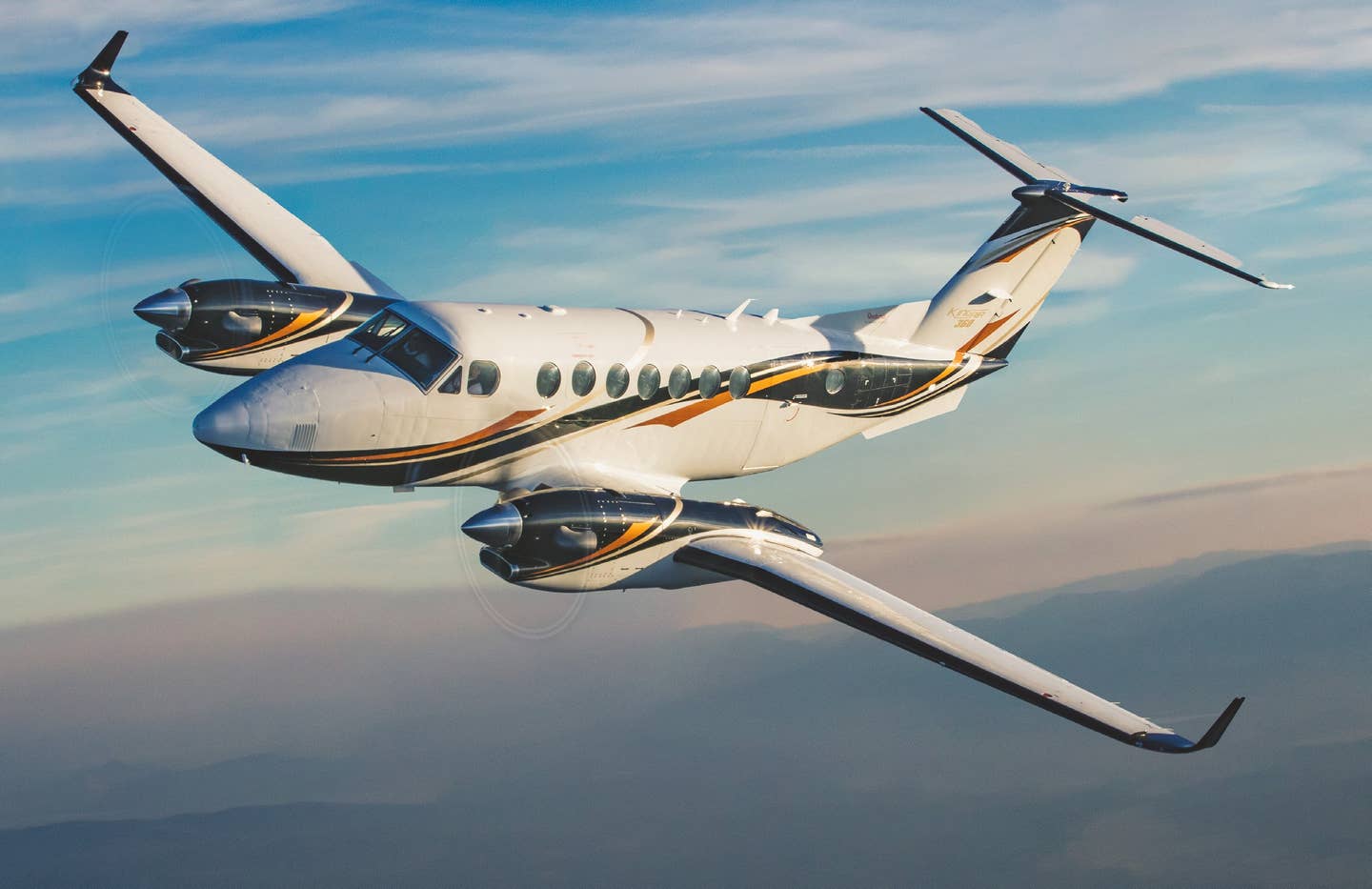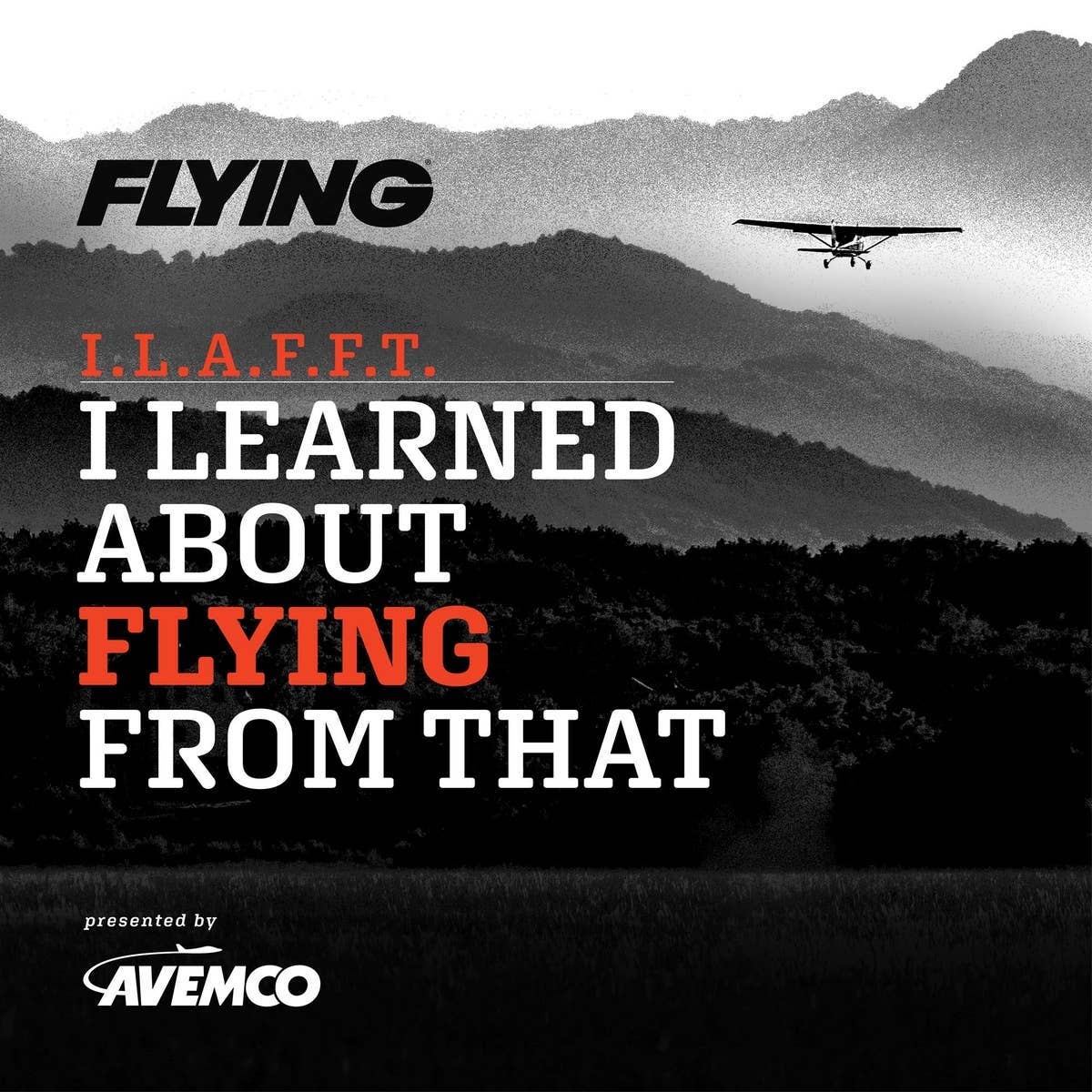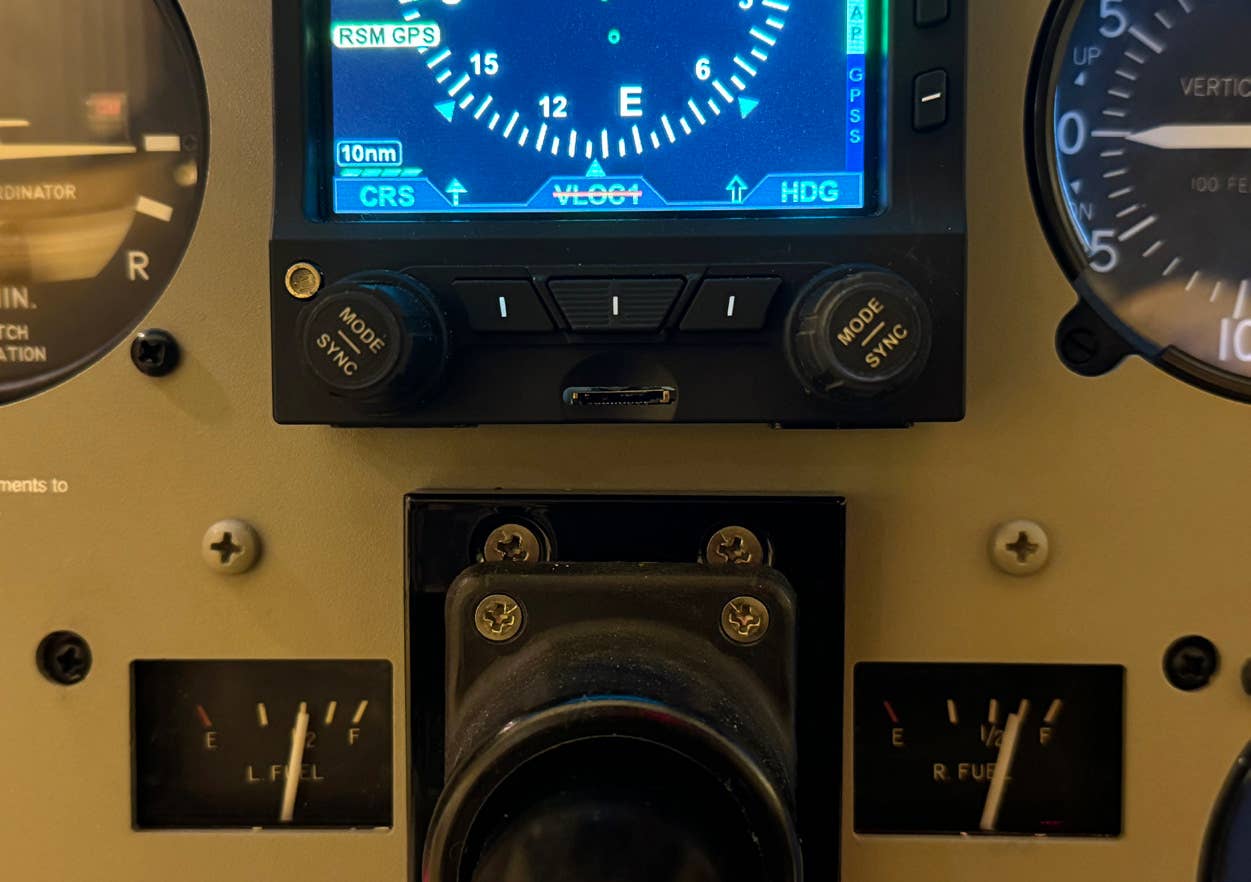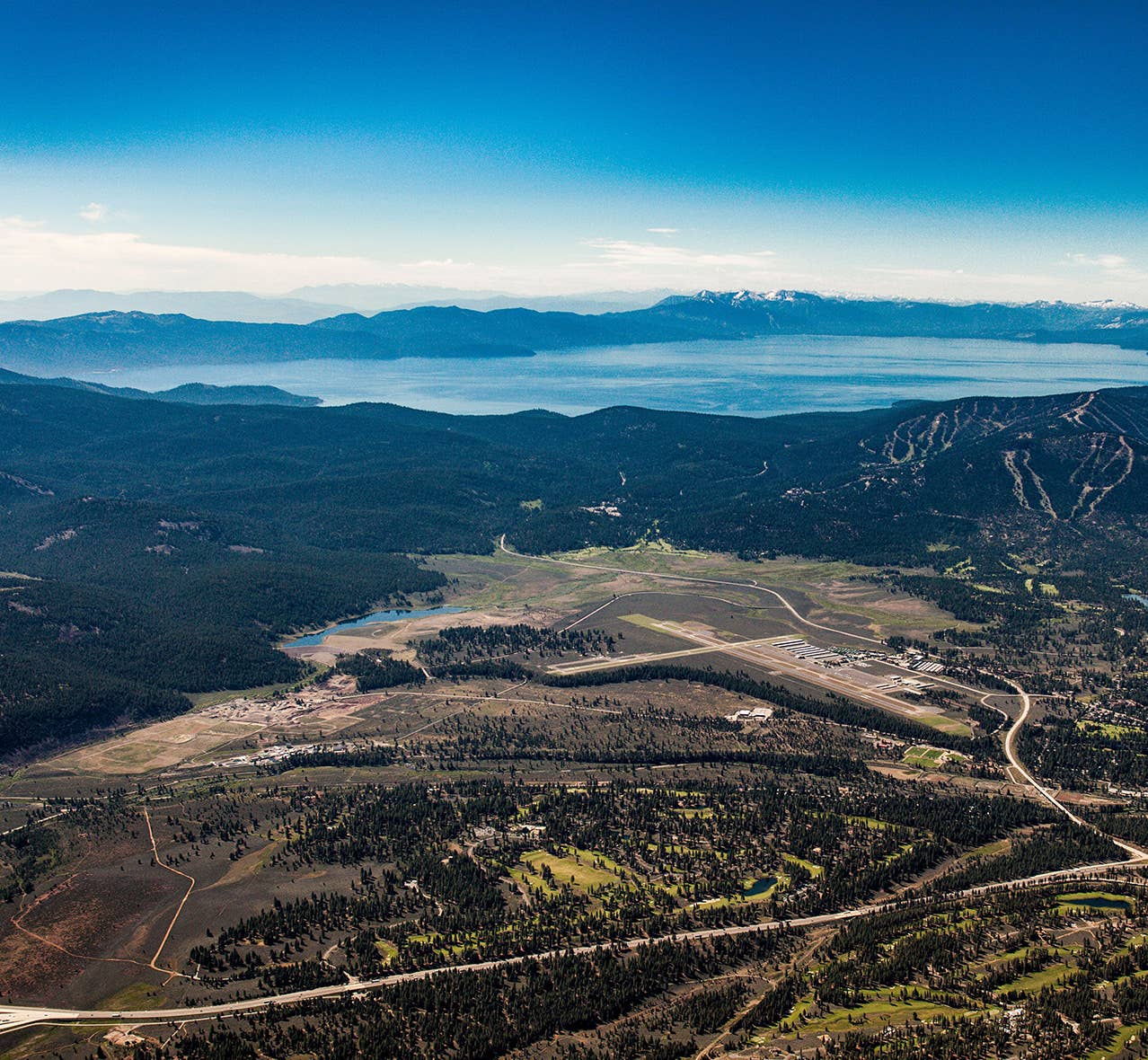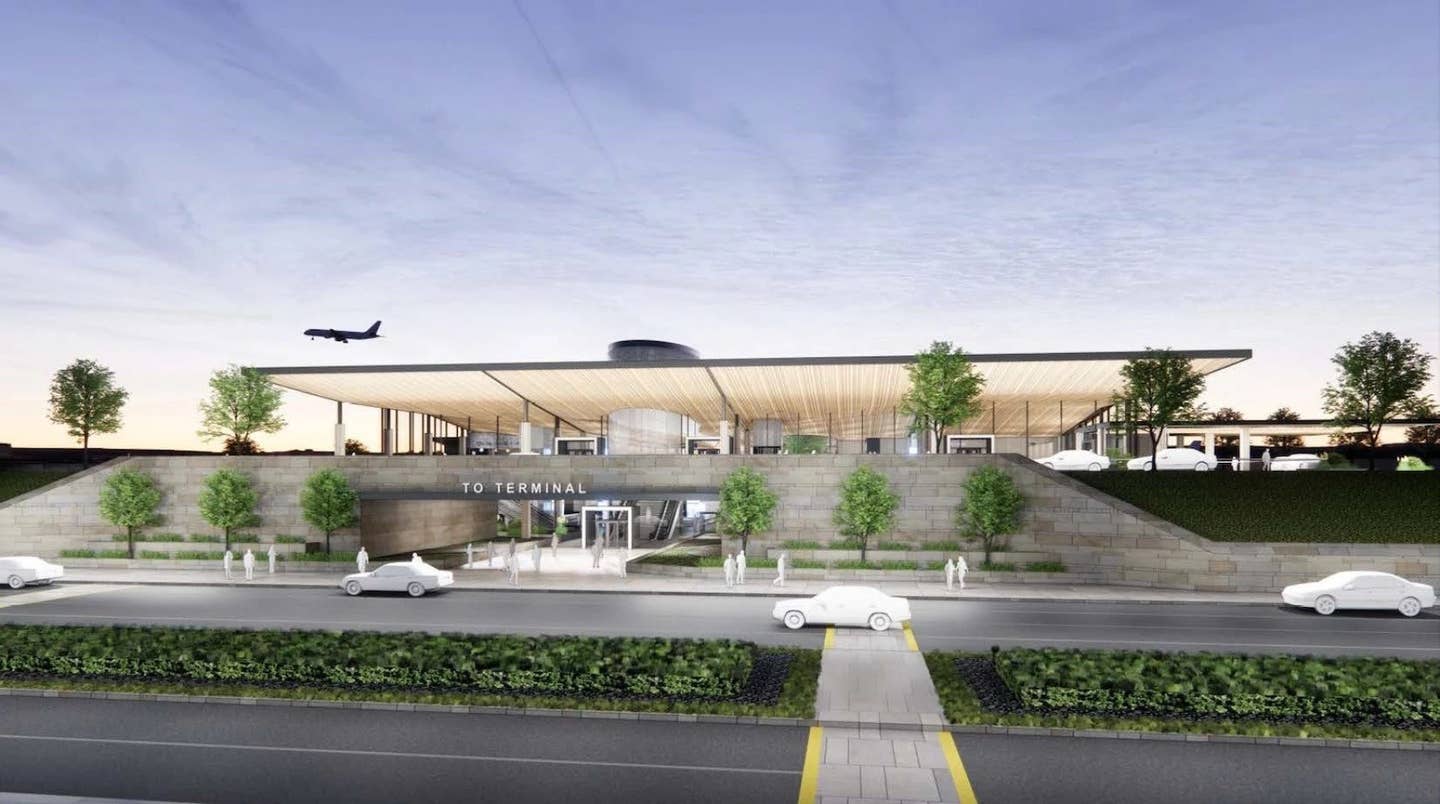‘This Is Africa’
Flying into the South African bush for a safari by air offers an epic, life-changing opportunity.
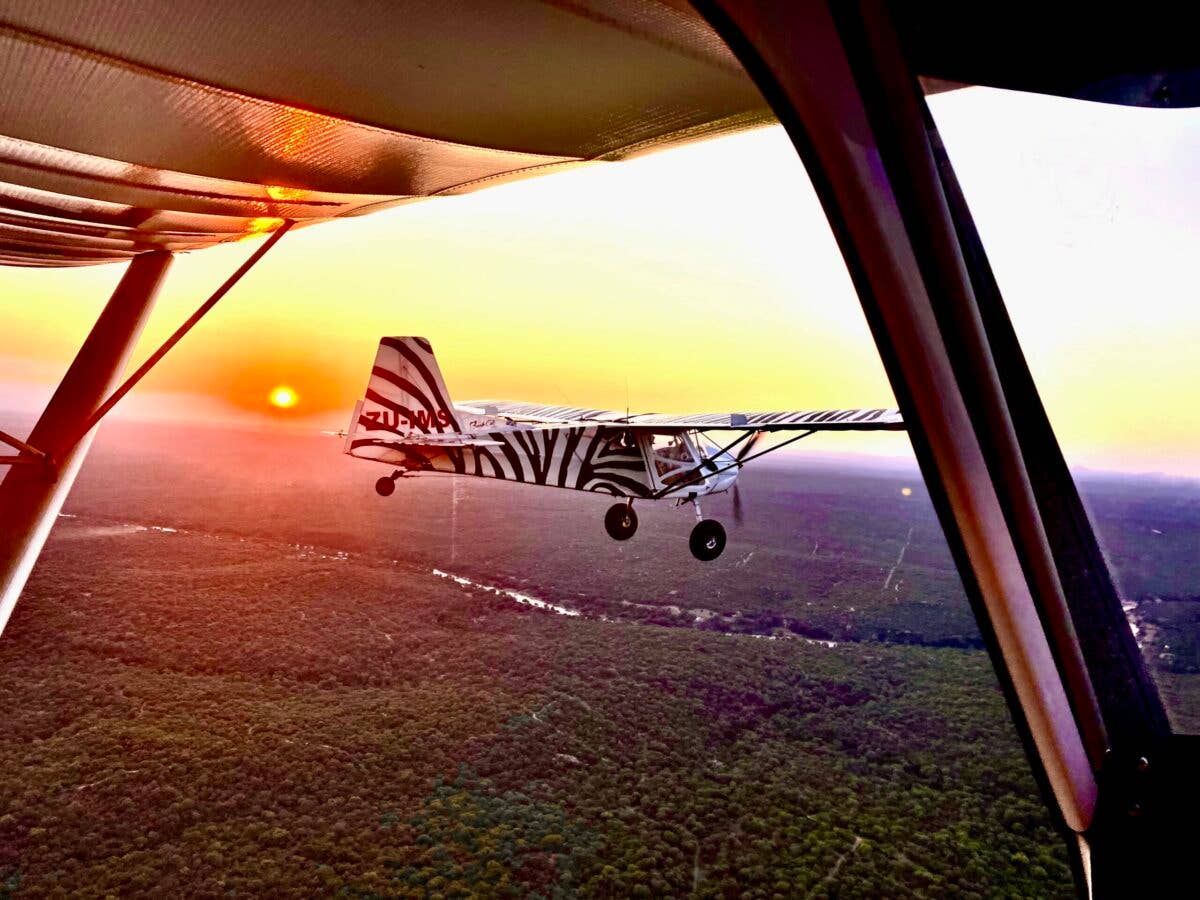
[Credit: Sarah Rovner]
As I sat in the classroom at the Johannesburg Flying Academy at the quaint Panorama Airfield, my young South African instructor started our lesson by writing three large letters on the whiteboard: TIA. The initials stood for “This Is Africa,” a well-known euphemism that the local pilots refer to fondly when summarizing flying on the continent. It’s a phrase that perfectly symbolizes the culture, beauty, and occasional bureaucracy of flying in a tamed—yet still wild—environment.
Getting Licensed
The starting point of my epic flying safari was to first become a “certificated” South African pilot through the foreign-license validation process. While this is normally just a paperwork exercise for many countries, South Africa requires both ground school and a flight test. South Africa is different from most western countries that employ what pilots there call an “open ratings system.” In South Africa, a pilot’s license—and it’s called that here—must specifically list each individual type of aircraft that a pilot can fly, and each requires its own proficiency check ride and submission to the South African Civil Aviation Authority. My mission that day was to get licensed to fly the SkyReach BushCat, a light sport aircraft I have flown extensively in the U.S. and Canada. I previously worked for the model’s distributors and its manufacturer, ferrying new and used airplanes to new owners.
SkyReach Ltd. has a long history of aviation in South Africa, a country whose people rely heavily on aircraft as a way of life. The predecessor to the BushCat was the Rainbow Cheetah, a similar looking nosewheel-equipped aircraft that has been around for several decades, often supporting anti-poaching missions and government work. It also provided an affordable means for individual citizens to enjoy the romance of flight.
The BushCat I flew was used by the Johannesburg Flying Academy for primary training and tailwheel training. After a one-hour proficiency check and submitting all of my paperwork, I was ready to start the adventure of a lifetime. I celebrated alongside Etelka Paxton from SkyReach, and we enjoyed a delicious South African breakfast made by a local pilot who lived on the airfield and operated a small café there.
First Launch
The next morning, Etelka picked me up at the hotel and drove me out to Springs Airfield (FASI). SkyReach provided me with its most famous zebra-patterned BushCat, ZU-IMS, known endearingly as India Mike Sierra. The plan was for me to solo in IMS in loose for-mation with a guide, Benjamin Fincham, flying in an-other BushCat.
After preflight and discussing procedures and planning, we launched to our first stop: the Middelburg EAA Fly-In, which was South Africa’s version of the Experimental Aircraft Association’s AirVenture at Oshkosh. Because an airshow was in progress at ourtime of arrival, we had to remain clear of the airspace and delay landing. Similar to EAA AirVenture, a temporary tower had been set up that was metering traffic into the airfield. Benjamin and I decided to explore a local river canyon in the meantime, which was when I saw exotic animals in the wild for the first time. I saw zebras, giraffes, and elephants from the air, all while gracefully maneuvering the nimble BushCat around the terrain. While I had seen such animals before in local zoos, observing them in the wild from an airplane made for an experience that I’ll never forget.
After landing safely at Middelburg (FAMB), we tied down the airplanes swiftly as weather was predicted to move in. South Africa has inverse seasons to the United States since it lies far south of the equator. The areas east of Johannesburg and toward the Kruger National Park were transitioning from the wet to the dry season, with occasional storms rolling through in the afternoons.
Middelburg was full of vibrant aviation adventurers. Vendors were lined up on the airfield and food trucks offered local delicacies that I had never tried before. The organizers had nice sleeping tents already set up, and we rented our own for the night. The evening celebrations featured an awards dinner, where people and aircraft were recognized for different feats. One particular accomplishment caught my attention—the first Black woman to be licensed as a hot air balloon pilot in South Africa. That was when I first met Semakaleng Mathebula, a young, passionate 27-year-old aviator who had accomplished something that nobody had yet to do in South Africa. We sat and talked for a while; her story is one of intrigue and perseverance.
Hoedspruit and the Aerotel
On the second day, I woke up in a tent to the fresh South African air. Benjamin and I had a nice breakfast in the hangar and then prepared to fly to Hoedspruit. The geography would soon change from high-altitude rolling hills to harsh mountains filled with rivers and mines. The views were remarkable as we made our way under clear skies over beautiful mountains. Those mountains ended abruptly and the land dropped off to the mostly flat rolling hills that comprise the Kruger National Park. The Hoedspruit Civil Airfield (FAHT)—there’s also a military air base there—featured a short, paved runway and a fuel farm. After landing, we could still see the mountains in the background, making for a picturesque view of traditional African bush with steep, powerful peaks in the distance.
From the airport, we were picked up by staff from the Aerotel, a luxury hotel that features rooms inside the fuselage of an old, repurposed Boeing 737 airframe. The airplane-themed hotel comes complete with wings and a flight deck. It also features a pool and common area, as well as a deck that overlooks the bush and mountains. We had custom meals made for us by a staff member at the hotel, one of the highlights of the trip. For evening entertainment, we went to a movie and ate dinner at a private game reserve, the 7 Star Oase. We then returned for a good night’s rest.
Flight to Kruger
Day three marked our journey to the Kruger National Park. One of the only public airports in the park is Skukuza (FASZ), a well-known compound for adventurers looking to experience the Kruger. Despite being a nontowered airport (or “unmanned,” as they call it in South Africa), it required a slot reservation and logistical coordination to fly into. The airport features a long runway with very little traffic, although the local airlines occasionally fly in tourists.
The Skukuza compound is protected by large gates and fences on every side to keep wildlife out. As we walked to our hotel room, I couldn’t help but notice the monkeys—they were absolutely everywhere as they couldn’t be kept out by the fences. The front desk staff warned us to keep all windows and doors closed because the monkeys would enter and wreak havoc.
The food at Skukuza was excellent, and the next day we were able to go on a game drive to see more animals in the wild. While the Kruger is probably the most famous park in South Africa, it’s also the largest, often making it difficult to spot the wildlife, which are very spread out. People often search for Africa’s “Big 5” safari animals (lion, leopard, rhinoceros, elephant, and buffalo). Of these five, we only saw elephants in the wild at the Kruger. However, we saw plenty of giraffes, crocodiles, impala, hyenas, and zebras.
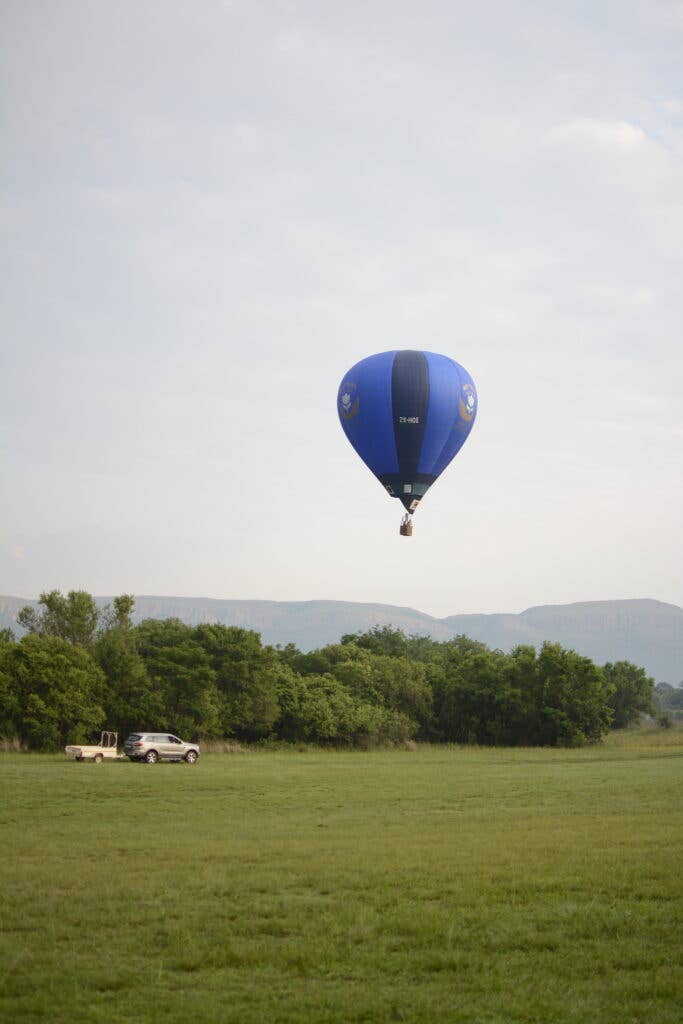
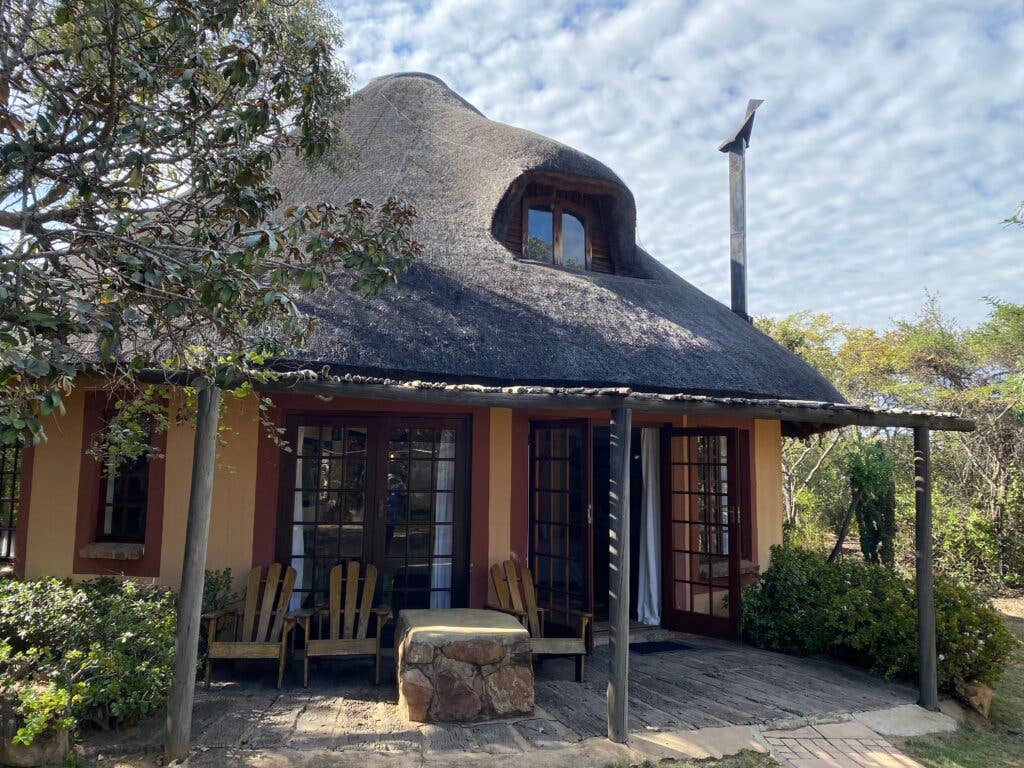
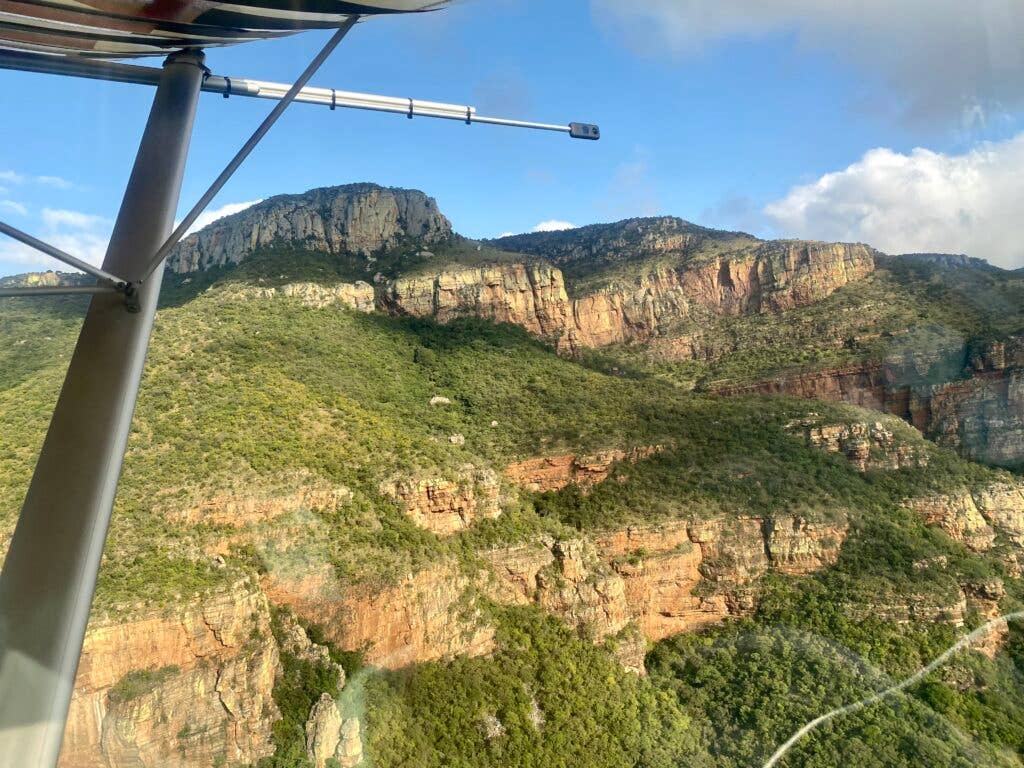
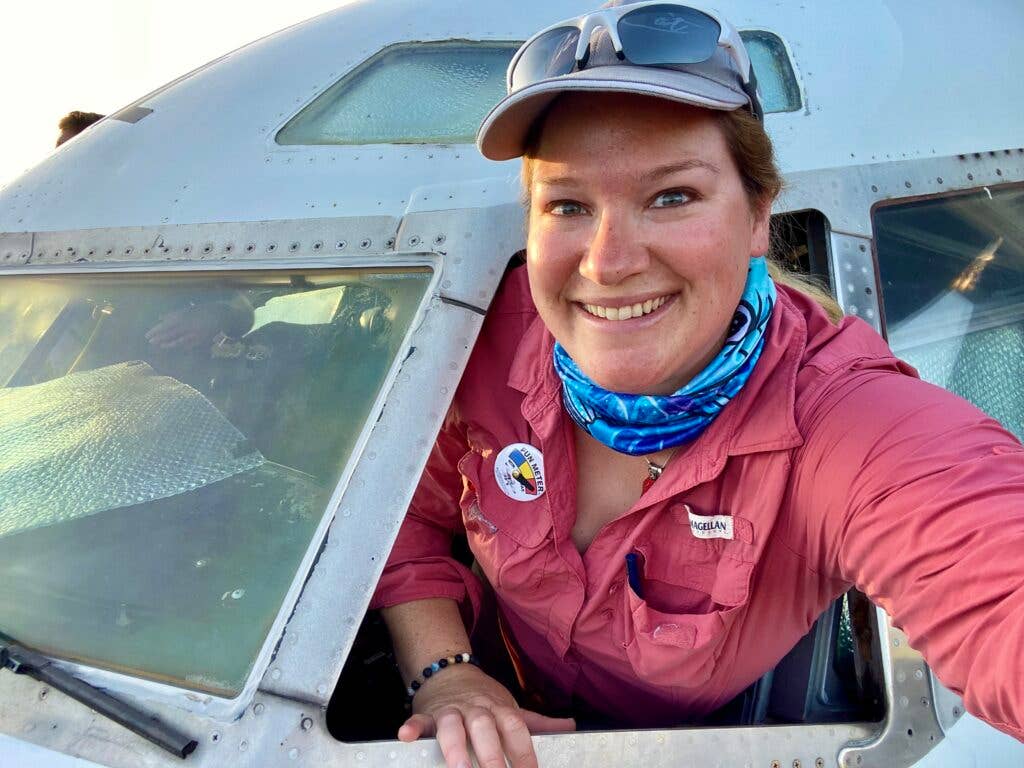
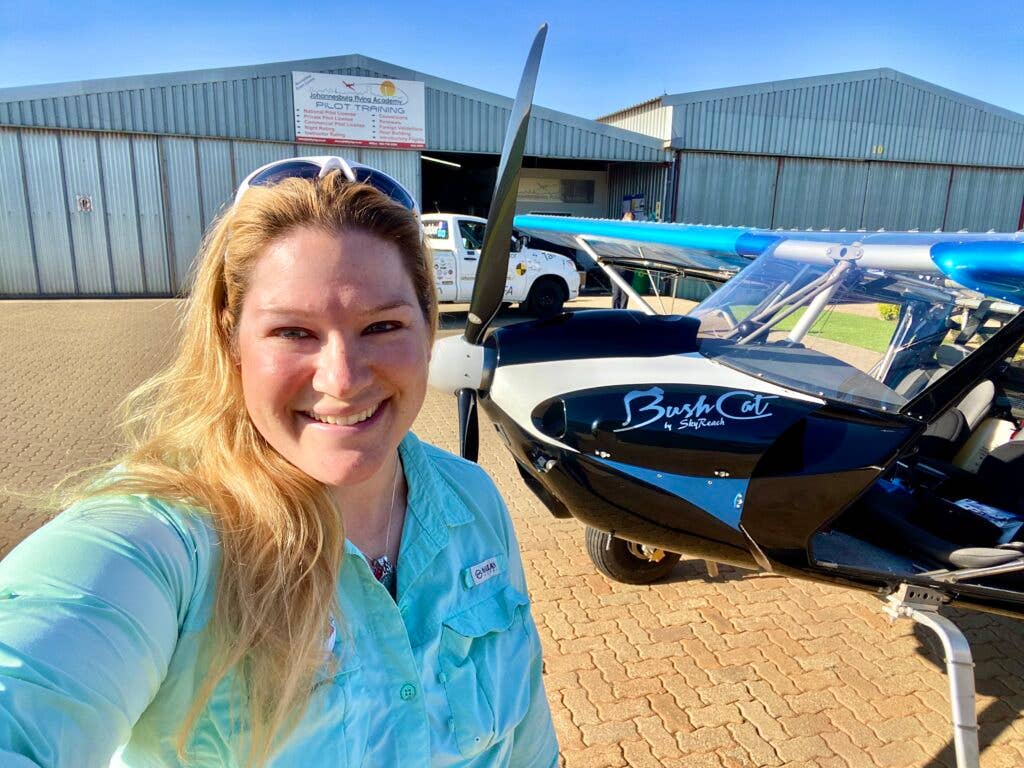
To The Hippo Pools
After two nights in Skukuza—on day five of our adventure—we departed to a new location. We loaded up in the trusty BushCats and launched to the Hoedspruit River Lodge, with its fairly technical and challenging runway. It was partially paved and partially loose gravel, wedged in between trees with a slight bend in the middle. It was easy for the BushCat—with a ground roll of well under 500 feet—but it could feel a bit short.
After landing, we were greeted by Joggie and Paula Erasmus and taken to the Ekuthuleni River Front Chalet overlooking the Oliphants (Afrikaans for "elephant") River, known for its population of hippos. In fact, there were so many that it wasn’t safe to walk around in the evenings. While hippos look like docile animals, they are actually one of the most dangerous in Africa and kill many people every year, owing to their territorial and protective instincts.
One of my favorite adventures at this lodge was the tour of the Blyde River Canyon in Mpumalanga. Our tour guide was Richi “Rikki” Wagner, a Danish settler to Africa. He leads tours through Botswana in his trusty off-road vehicle and drove us out to the Blyde River Canyon for a boat tour. The scenery was spectacular and mostly untouched by humans. We saw hippos and crocodiles, as well as many types of antelope, including Kudu and bushbabies.
On day six, we discovered flat tires on the airplanes from thorns in the bush. We spent a good part of the day getting everything repaired, and decided to spend the night back at the chalet. That evening, we were invited by our hosts for a traditional South African braai, a style of cooking similar to our barbecue in the U.S. Just before sunset, we took Paula and Joggie—as well as Rikki and his wife—flying in the BushCats.
Private Game Reserves
For day seven, we flew to Nyathi Airfield (FANT), located in the Nyathi Wilderness, for a stay at the Izintaba Private Game Reserve. At the beautiful chalet in the mountains, we were able to walk down the hill to try our hand—unsuccessfully—at fishing. We could see evidence of leopards and hear noises from the big cats, and viewed wildlife from a distance. SkyReach arranged a hunt for the next day at Haak N SteekSafaris, a great outfitter with knowledgeable guides and staff that offer both hunting and wildlife viewing at a private lodge.
On the eighth day, we made a long flight from Nyathito Bona Bona, which is a very popular private game reserve that caters to tourists outside of Johannesburg. Despite primarily visiting tourist locations, I didn’t meet another American for nearly a week during my travels. It was almost odd to hear an American accent coming from a television screen after being in the bush for so long. The restaurant at Bona Bona overlooked the reserve where hippos, rhinos, and other wildlife came within 50 feet of the overlook.
Benjamin and I were talking at our table when someone came over and asked, “Are you Sarah?” which I confirmed. The young man said, “You flew my Cessna 210 to Europe!” It was none other than “JP,” Juan-Peter Schulze, a blogger who had flown N210EU around the world and then sold it to a European buyer. I ferried it to its new owner in the winter of 2018—a journey featured in FLYING’s November 2019 issue. JP was in South Africa building an aircraft, and vaca-tioning at Bona Bona to take a break from the strenu-ous task of the build. We had some great conversations,and it truly showed just how small the world can be in aviation, despite being thousands and thousands of miles from home.
One More Morning
On day 10, we experienced a morning game drive. On that morning, I also met Gerry the Giraffe, and actually fed him a few bottles of fresh water. I had a chance to pet some leopard cubs and see several big cats at the game reserve as well. In the afternoon, Benjamin and I flew back to Springs Airfield, completing the most epic flying safari that I have ever been on in my life.
Once Africa gets in your blood, it’s there to stay. While comprising so many different nations, regions, cultures, and landscapes, the African continent is a majestic, spectacular, and remarkable place that will forever have a place in my heart—South Africa in particular. The people, food, and adventures are unparalleled to anything I have ever experienced before, and I am looking forward to returning to do more flying. The operation with SkyReach was top notch, and the execution of our adventure was exceptional, despite operational challenges changing our plans as we went along. I was in good hands the entire time, and plan to go back to do more flying.
Indeed: This Is Africa. Those words will resonate in my heart and mind for the rest of my days.
Semakaleng Mathebula: A first for South Africa's hot air balloon community
I first encountered Semakaleng Mathebula at the Middelburg EAA Fly-In in South Africa during the awards dinner. She was called to the stage to celebrate a large accomplishment: being the first Black woman to become licensed as a hot air balloon pilot in South Africa. Later that evening, in awe of the passionate 27-year-old who persevered through so many challenges, I introduced myself to her. I eventually interviewed her to learn more about her story so I could share it with others.
Semakaleng started her aviation journey when she worked in marketing for a balloon safari operation, and then eventually as a ground crew member. Though the act of ballooning was initially shrouded in mystery, she quickly discovered her passion for it and acquired her license. The two greatest hurdles she faced were access and funding, a similar story to many aspiring pilots in theU.S., as well.
One way she believes ballooning can attract more people to the sport is through visibility. After all, many people don’t know that it exists or even how to get started as a hot air balloon pilot. The next thing on the horizon for her was to go to the world championships in Slovenia, and she sought funding for that mission. The event was held in late September, with the South African team not ranking high but having a real “jot” of a time. You can read more about Semakaleng and ballooning in South Africa here.
SkyReach BushCat
Price: Roughly $90,000
Powerplant: Rotax 912 ULS, 100 hp
Seats: 2
Max Gross Weight: 1,320 lb.
Empty Weight: 750 lb.
Fuel Capacity: 24.8 gallons
Wingspan: 31.5 ft.
Wing Area: 146.17 sq. ft.
Average Cruise Speed: 86 ktas
Stall Speed: 38 kias
Max Rate of Climb: 700 fpm
Endurance: 6.5 hours
Takeoff Distance (ground roll): 472 ft.
Landing Distance (ground roll): 235 ft.

Sign-up for newsletters & special offers!
Get the latest FLYING stories & special offers delivered directly to your inbox

